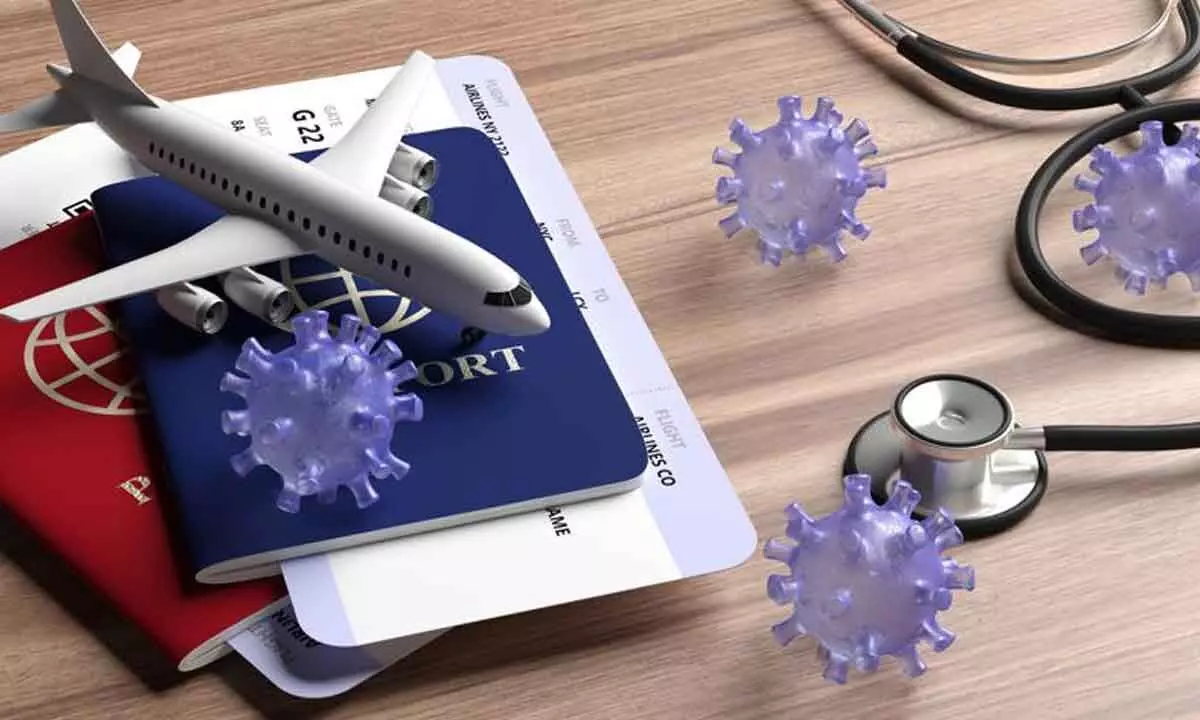Covid-induced changes likely to affect travel industry in 2022
Top-tier destinations and suppliers will likely see a fast influx. Others may have to wait longer and take creative approaches to reach potential visitors from the markets that will come back first
image for illustrative purpose

For the travel industry, 2022 is about more than simply watching air passenger volumes increase and hotel occupancy rates pick up as visitors return to cities and beaches. Some trip types will fare better than others, and some demographic groups will lag. In general, the pandemic brought changes to the way we live and work. Some of those changes are likely to continue to affect travel once the health crisis subsides.
As travel suppliers seek to better serve the evolving needs of remote workers, some are already capitalizing on their trend toward more frequent trips. Subscription models, which have historically struggled due to low frequency of travel, are getting a second look.
Increased interest in alternative accommodations will likely continue to push hospitality providers to evolve. Hotels that can will elevate home-like amenities, such as kitchens, adjoining rooms, and space to work. In the rental space, platforms will continue to invest in providing a more consistent, predictable experience and serving trip types including business travel.
Attracting foreign travellers - and meeting their expectations - should be on the mind of travel providers across categories. Top-tier destinations and suppliers will likely see a fast influx. Others may have to wait longer and take creative approaches to reach potential visitors from the markets that will come back first. Providers across points in the journey should also work to reduce the friction and uncertainty that still accompanies international travel. Hotels, airlines, and destinations can help facilitate easier access to affordable or free testing, up-to-date information about entry requirements, and straightforward means to verify and share vaccination status. Efforts in this area will be strengthened significantly when executed collaboratively, with priority placed on clarity and simplicity for the traveller.
Staffing challenges are already making it harder for hotels to deliver on guests' expectations. Many have shifted housekeeping to a by-request-only model, and cut back on food and beverage amenities including room service and restaurants. Guests' acceptance of these cutbacks (sometimes while still paying resort fees) will wane as travel frequency accelerates.
Automation could help to address hotels' labour challenges, but there are no quick fixes. Increased adoption of contactless check-in eases the need for reception staff, but cleaning rooms and operating restaurants still requires human labour.
If these challenges persist - and indicators are that they will - expect hotels to begin experimenting with itemized charges for amenities, such as fitness centers, and services, including housekeeping. And as these once-standard parts of the hotel experience become unbundled, they can also be leveraged within loyalty programs.
As leisure travel moves toward a state of more steady demand, travel providers should pay close attention to emerging age- and income-driven trends. In patterns that can be expected to continue in 2022, older travellers are showing heightened hesitance, and higher income travellers are coming back at a much faster pace than those in lower income brackets, Prior to the pandemic, the baby-boom generation was a demographic drawing increasing attention from travel marketers and suppliers as they straddled peak earning years and retirement. Now, travellers over 55 (most of whom are boomers) are significantly less likely to travel and cite health worries as a top reason why.
Higher earners are not just spending like they always have – 30 per cent say they budgeted more for trips over the 2021 holiday season, compared to just 12 per cent of lower-income travellers. A large share of higher-income traveller attributes their expanded budgets to shifts that for many have been pandemic-driven: workplace flexibility and reordering of personal priorities placing more emphasis on experiences over things.
Industry suppliers, from airlines and hotels to cruise lines and rental car providers, want to see travellers return in force, across regions, age groups, income levels, and trip types. But the comeback has been uneven and looks likely to remain so well into 2022.
In 2022, the industry still faces pandemic-related challenges and heightened responsibility to ensure the safety of travellers and workers. But travel's green shoots have appeared, along with opportunities to encourage continued growth. Immediate imperatives include catering to the groups most ready to travel, and preparing for the next wave.
But action is also required to prepare for likely long-term shifts such as the reduction in corporate travel, and new travel patterns among flexible workers. These are likely to persist after the global health situation stabilizes, and they should be treated as new but lasting components of travel's structural reality.

